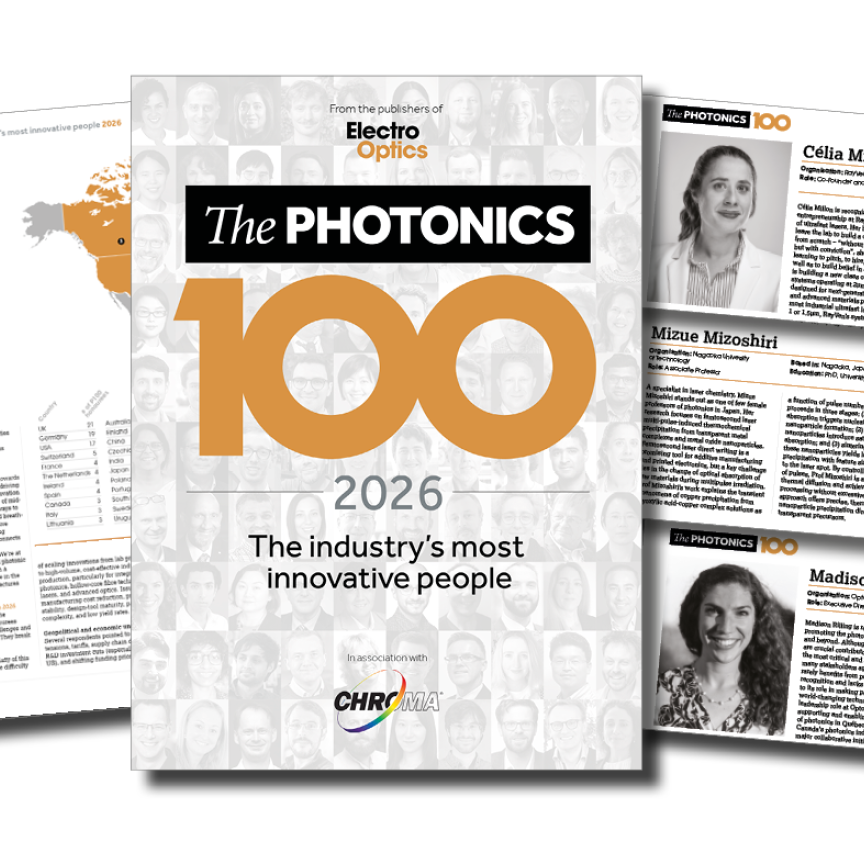With nominations underway for The Photonics100 – our list of the industry’s top innovators in association with our sister title, Electro Optics – Fibre Systems spoke to previous honoree Peter Winzer, Founder & CTO at Nubis Communications about the future of his work in photonics for optical communications.
What is the next big thing in your area of photonics research?
For more than a decade, I have been promoting massive integrated spatial parallelism as the unavoidably next big thing in optical communications, and step by step we’re seeing this next big thing taking shape across all areas of optical communications, from submarine cables to short-reach computer interconnects.
There is now way out and no way back. This trend is fundamentally unavoidable because Nature only gives us 5 degrees of freedom to work with, and only one of them is truly scalable: Time (e.g. symbol rates) is no longer scaling, with research having stalled in the 200-GBaud range 6 years ago. Frequency (e.g., ultra-wideband) is nothing more than a stop-gap solution to delay the deployment of new fibre but does not solve the long-term scalability problem, neither in long-haul nor in short-reach. Polarisation and Quadrature are already fully utilised by today’s coherent transceivers. Space is the only remaining degree of freedom that offers unlimited scalability. We need to embrace massive fibre bundles as our friend.
What do you think the biggest challenges in your area will be over the next year?
The biggest challenge is the tight array integration of many parallel system components. In short-reach transceivers, we are no longer talking about a single fibre pair, we are talking about 8 fibre pairs. Soon we will be talking about 16 and 32 fibre pairs. In the design of advanced ML/AI engines, we are no longer talking about a single chip with electrical I/O interfaces, we are talking about multi-chiplet processors.
Soon we will be talking about co-packaged optical I/O chiplets. In long-haul transport, we are no longer talking about a single wavelength interface, we are talking about superchannels of many wavelengths to carry the interface rate of a logical router port. Soon we will be talking about an entire long-haul fibre’s worth of capacity as a logical channel, and wavelength switching will be replaced by space switching. In order to make all of the above happen at low power and low cost, massive array integration is needed. A huge challenge, but an unavoidable one.
What is the biggest personal challenge you have overcome?
The biggest personal challenge on a professional level was jumping into the unknown when I left Bell Labs, after two decades of working with truly exceptional people. I knew that I needed to move on to pursue my conviction of making massively integrated parallelism a commercial reality. After quitting Bell Labs, I was on my own for 8 months until I received venture funding for Nubis Communications, and with it also received another paycheck. The decision to jump into the unknown was very hard. But it had become unavoidable. It had become high time to move on. I am very fortunate to again work as part of a great team of truly exceptional individuals at Nubis.
What advice would you give to someone embarking on a career in photonics research?
My biggest advice to all engineers, and especially to those working in the hype-struck field of photonics, is to never blindly follow the hot topics but instead always honestly question why you are doing what you are doing. There are many supposedly game-changing (and often well-funded) research topics out there that may be great fundamental science but over time fail to make an engineering impact, even if they produce Nobel Prizes along the way. Know the real-world problem you are trying to solve, assess its practical importance in the bigger picture, consider all solutions to the problem, especially those that lie outside your own field, as these may be simpler and cheaper in practice, and assuming personal success ask yourself what real-world impact your contribution would make in the bigger context.
Who has been the biggest help to you in your career?
Apart from my family, who has always supported me in what I have been doing, my biggest help has come from my mentors, in particular from Walter Leeb, Herwig Kogelnik, and Andy Chraplyvy. They have not only instilled into me their approach to practical, real-world engineering but also to role-model leadership, uncompromising rigour, and unwavering professional ethics. And without a question, being embedded in a local as well as a globe-spanning network of friends and colleagues has been fuelling my everyday work through countless technical discussions, which have always been a key source of inspiration to me.
Who, in your opinion, are the up-and-coming R&D ‘rock stars’ in your area or organisation?
Although I could name quite a few outstanding individuals here, I would be sure to unintentionally omit names. I will therefore try to phrase the answer to this question more generally as to what qualities I consider the hallmarks of up-and-coming R&D ‘rock-stars’:
They take everything they do very seriously and devote ample time to what they are doing; they commit and deliver at speed, without compromising technical quality; they are always out to learn and listen to feedback from all around them; they try to get to the truth quickly and adopt the truth even if it contradicts their current beliefs; they are as comfortable stopping non-promising work as they are picking up new promising work; they are flexible and adapt to change; they are creative and find new approaches to solving problems; they have high ethical standards and are concerned with technical problem solving rather than with rumours and politics; they welcome input from others, especially technically critical feedback; they are humble and rather speak about technical topics than about themselves; they solidly document their work for others and participate in the volunteer scientific community.



